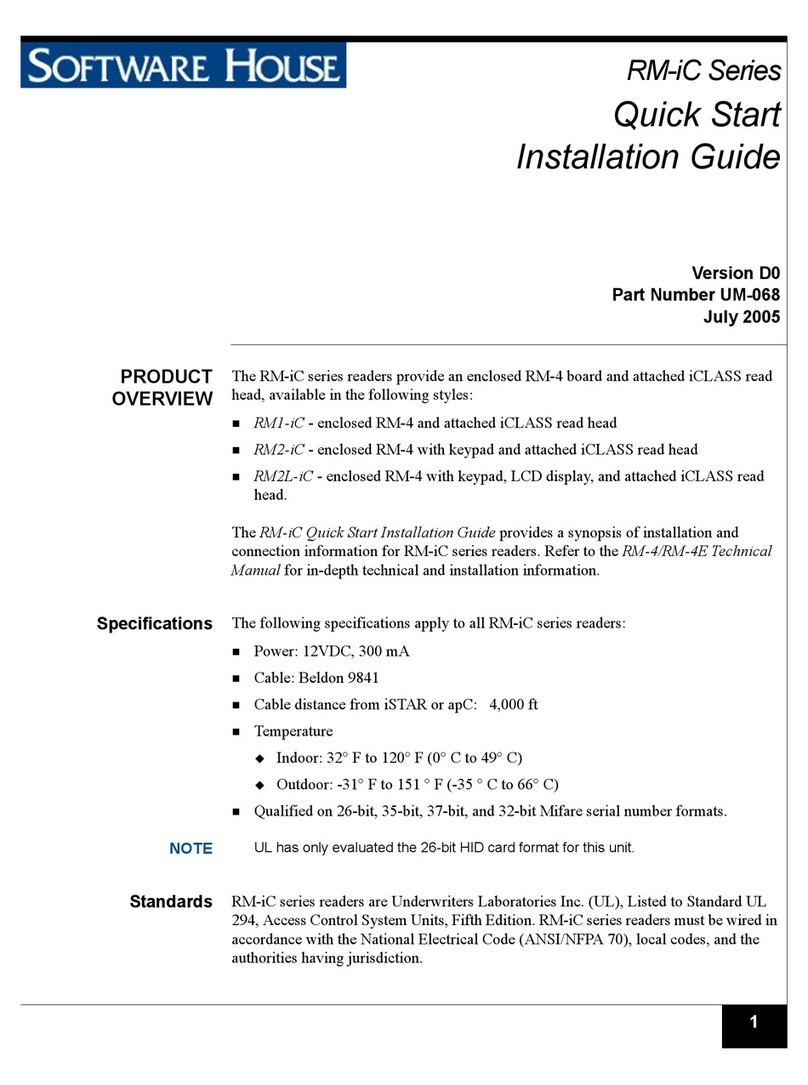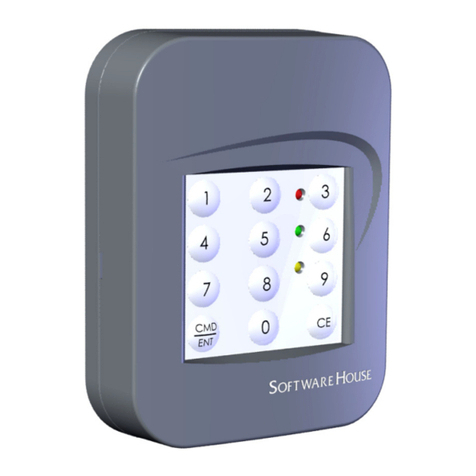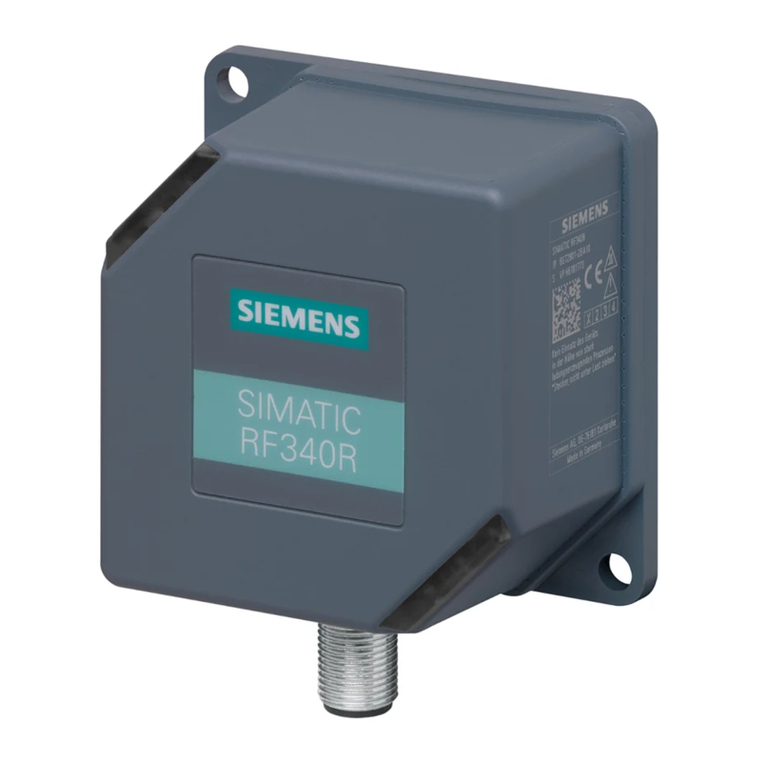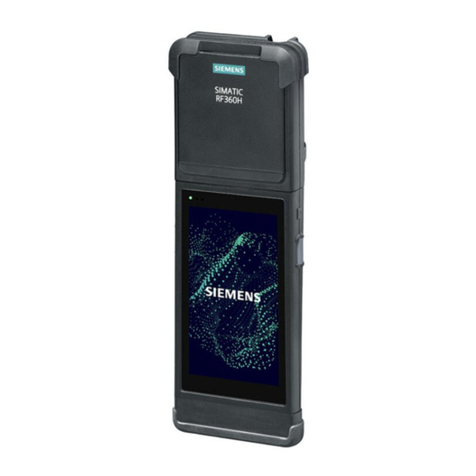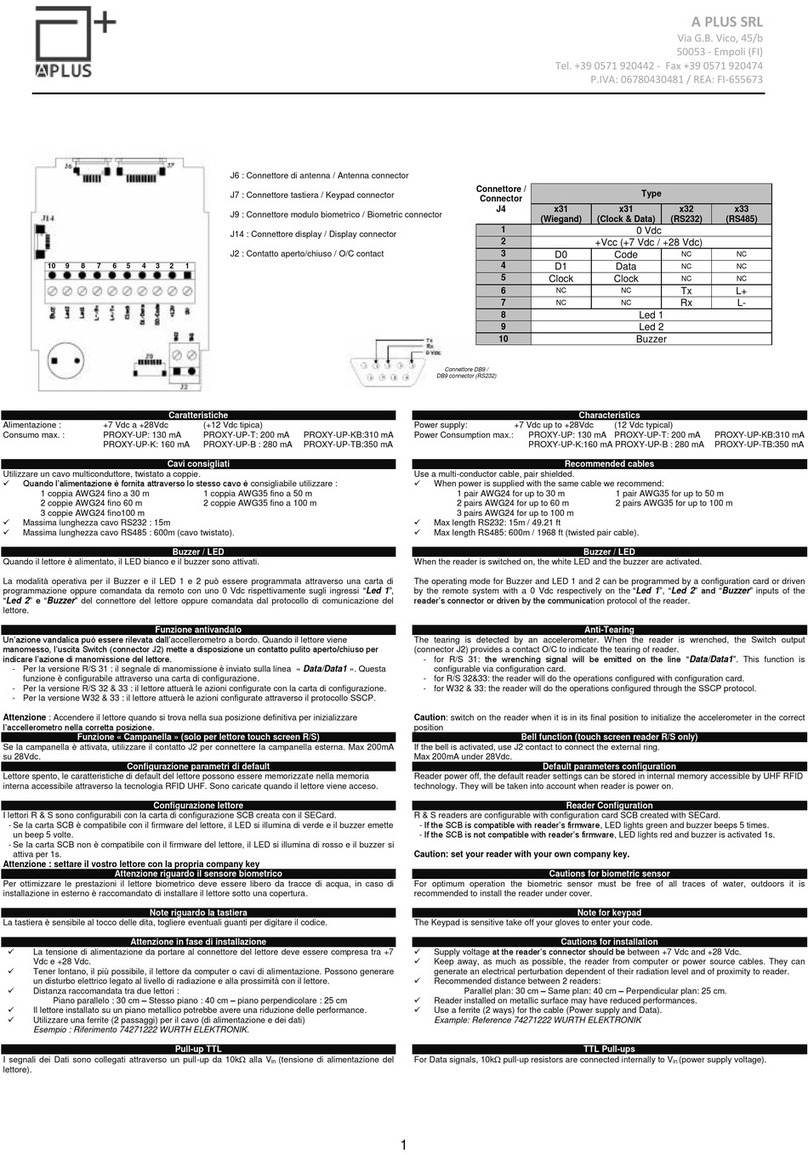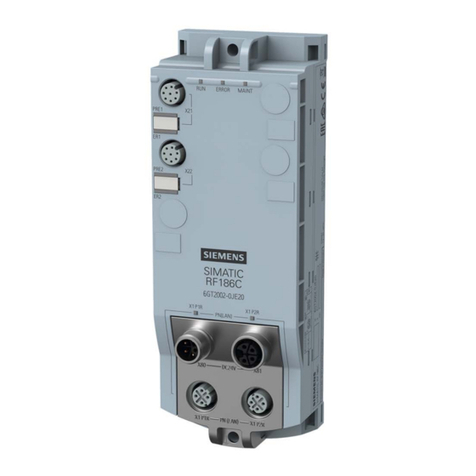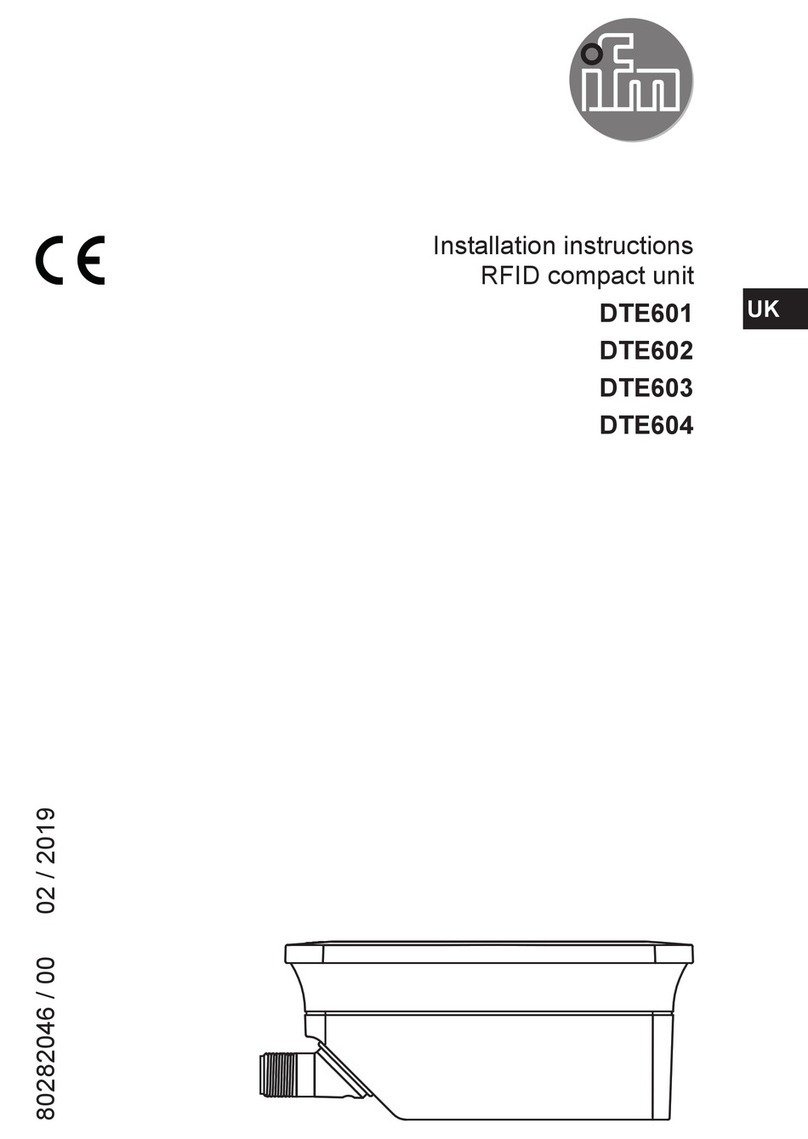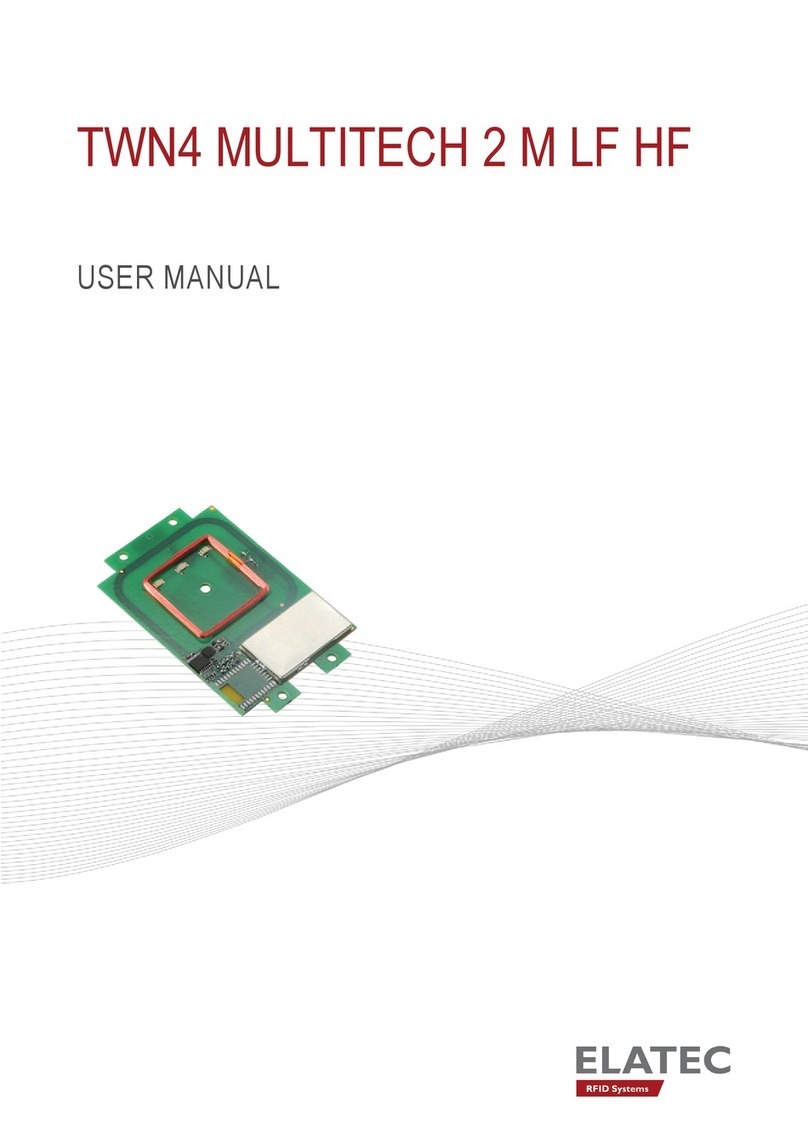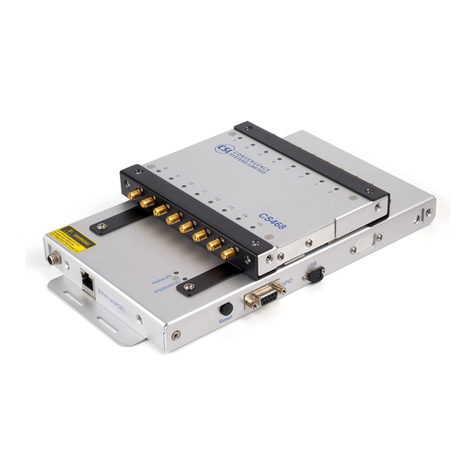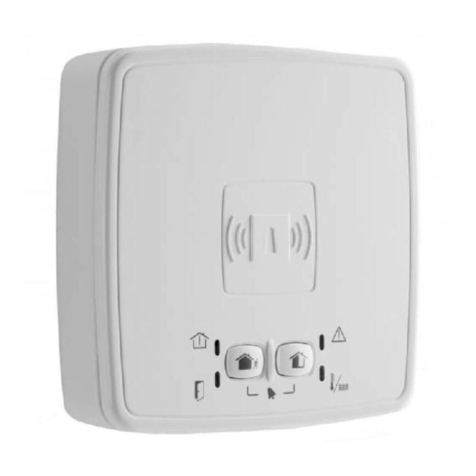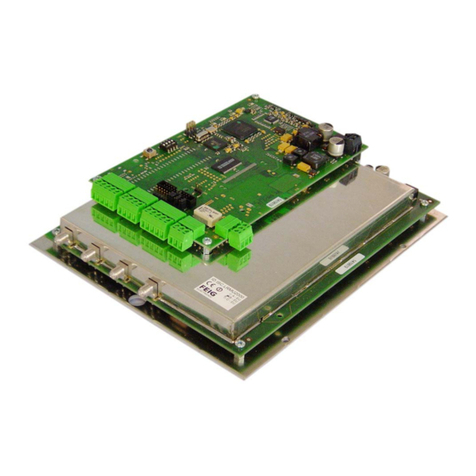Software House RM SE Series Instruction Manual

1
RM1-SE, RM2-SE, RM2L-SE READER
Quick Start Installation Guide
Revision C0
April 2021
Part Number 8200-1432-01
Overview
The RM SE series of readers provide a multi-technology read head that
supports both Proximity and iCLASS®. RM1-SE, RM2-SE, and RM2L-SE
readers include an enclosed RM-4 board that communicates to an iSTAR or
apC control panel through RS-485 half-duplex communications (the RM bus).
Table 1 on page 2 lists the reader model descriptions and part numbers.
RM2L-SE
RM2-SE
RM1-SE

Overview
2
Supported Technologies and Card Formats
The RM SE Multi-Technology reader offers full HID® iCLASS® support,
including legacy iCLASS, iCLASS SE®, and iCLASS SEOS™ cards, and the
ability to read the encrypted PACS data from these cards. The reader also
supports reading serial numbers from MIFARE® and will read most 125 KHz
formats (HID and CASI ProxLite).
Proximity (125 KHz) Formats Supported
HID 26-Bit
HID Corporate 1000 (35-bit and 48-bit)
HID 36-Bit Wiegand
HID 37-Bit Wiegand
Other HID Pass-through Formats
(GE) Casi Rusco ProxLite
Smart Card (13.56 MHz) Formats Supported
MiFARE Serial number, 32-Bit
Legacy iCLASS
iCLASS SE PACS Data
iCLASS SEOS PACS Data
Table 1: Reader Model Part Numbers
Description Part Number
Reader with no keypad or LCD; with built-in RM-4 DS interface board RM1-SE
Reader with keypad; with built-in RM-4 DS interface board RM2-SE
Reader with keypad and LCD; with built-in RM-4 DS interface board RM2L-SE
NOTE The RM Multi-Technology reader can be used to transition from a proximity system to a
more advanced smart card system gradually over time, or to maintain the existing
proximity card system while moving selected personnel to smart cards.
UL has not evaluated Smart Card technology with this unit.
UL has evaluated the Wiegand Proximity (26-bit only) card format for this unit.
UL has not evaluated encryption.

Features
3
Features
Compatibility with most 125 KHz Proximity formats, HID iCLASS, iCLASS
SE, iCLASS SEOS cards, and MIFARE ISO 14443A credentials (badges,
disk tags and key fobs). Reads both 125 KHz and 13.56 MHz credentials in
the same reader.
Electrical protection (reverse polarity diode protection on power lines).
Data lines: high-speed transient voltage suppressor diodes.
IP65-rated sealed electronics for deployment in both interior and exterior
environments.
Beep-on-card defaults to ON.
Controller Communications
• RM RS485 half duplex
Open Standards Compliance
• ISO 14443A
• ISO 14443B
• ISO 15693
CASI ProxLite
• 44-bit pass-through
Specifications
The following specifications apply to the readers:
Data Cable: Recommended data cable is Belden®#9841or equivalent. The
maximum length is 4000 feet (1212 meters) between the controller and the
reader.
Power Wiring: Recommended power wiring is Belden #8461/8442 twisted
pair. Maximum length depends on the wire gauge. The reader can be
powered from a local power supply.
Temperature Indoor/Outdoor
• -31°F to 149°F (-35°C to 65°C)
NOTE UL has not evaluated IP65 rating.
NOTE Not all features have been evaluated by UL.

Installation
4
Reader Power Supply
Requirement
12 VDC, 300 mA maximum +/- 10%.
Standards RM readers are Underwriters Laboratories Inc. (UL), Listed to Standard UL 294,
Access Control System Units, Seventh Edition.
RM readers are Underwriters Laboratories Inc. (UL), Listed to Standard UL
1076.
RM readers must be wired in accordance with the National Electrical Code
(ANSI / NFPA 70), local codes, and the authorities having jurisdiction.
Installation
This section describes installation and wiring.
Install the reader in the following order:
1. Install the reader mount plate.
2. Wire the components.
3. Following ESD Protection Requirements, connect and ground the cable
shields on the reader bus.
4. Set the reader address.
5. Install the ARM-1 relay boards (optional).
6. Mount the reader standard housing on the reader mount plate using the
Software House security screwdriver (Part number 132-183).
NOTE Reader power to be supplied from power limited output of a Listed control
unit or from a separately-supplied UL Listed, access control (UL294) or
burglar alarm (UL603), power-limited power source with four-hour standby
capability.
Table 2. UL 294 7th Edition Performance Levels
Feature Level
Destructive Attack 1
Endurance 4
Line Security 1
Standby Power 1

Installation
5
Installing the RM Mount Plate
Figure 1 shows the reader standard housing, mount plate, and gasket. All RM
readers conform to the same housing, mount plate, and gasket dimensions.
Figure 1. Standard Housing and Mount Plate
Figure 2 on page 5 shows reader mount plate dimensions.
Figure 2. Reader Mount Plate Dimensions
To install the mounting plate:
1. Position the gasket with the reader mount plate so that the mounting holes
are properly aligned.
2. Ensure that the gasket is placed between the mounting surface and mating
surface of the reader mount plate.
3. Fasten the reader mount plate to the mounting surface with the gasket
material in between.
Standard Housing
Standard
mount plate Gasket
Housing screws
Require a security screw driver

Setting up the Reader
6
4. Install the gasket so that no gaps or wrinkles are present.
The mount plate contains eight mounting holes. You do not need to use all
eight holes; usually any four of the eight holes are adequate. The mounting
holes are 0.156” and provide clearance for 6-32 flat head countersunk bolts or
screws.
ULC 60839-11-1 certified reader models RM1, RM2, and RM2L are grade 1
and indoor use only.
Wiring the Inputs, Outputs, and Reader Bus
Figure 3. P1 and P5 Wiring Requirements
Setting up the Reader
To setup the reader:
1. Set the Reader Address Switch, SW1 (a 16-position rotary switch, see
Figure 3 on page 6), to a number from one to eight. Each Reader along the
bus must have a unique address.
NOTE SW3-7 and SW3-8 refer to the Beeper.
P3 BEEP refers to the Beeper on the read head, if it exists. There is no Beeper on the reader
read heads. Some third-party readers that are connected to a standalone readers have
beepers.

Setting up the Reader
7
2. The SW3-1, SW3-2, SW3-3, and SW3-6 Configuration Switches are factory
preset for the readers, as shown in Figure 4 on page 7.
3. You can override SW3-4, SW3-5, SW3-7 and SW3-8 if desired.
RM-4 Pre-Wired Reader Connections
Figure 4. RM-4 Reader Pre-Wired Connections
To properly terminate an RS-485 line, only the last unit on the bus should have
SW3-5 in the On (closed) position.
NOTE The following P3 Reader pins are not used on the RM readers:
RS-485 TXD/RXD +
RS-485 TXD/RXD –
BEEP

Setting up the Reader
8
Table 3 on page 8 indicates the wiring for units with keypads.
Grounding and Shielding
Single RM Reader
To wire a single RM reader to a RS-485 controller port:
1. When connecting a single RM reader to the reader bus, use twisted pair,
shielded minimum 24 AWG cable. Attach the shield at the controller end.
(Refer to TAB 2010-15 “RM Reader ESD Protection Guidelines.”)
2. Attach a local earth ground (18 or 22 gauge) wire to the J5 component on
the reader.
Multiple RM Bus devices
To update multiple RM Bus devices on a single RS-485 port:
1. Attach the shields along the bus together (insulate each connection). Snip
off the shield wire at the end of the bus. See Figure 5 on page 9.
2. Attach the shield to the ground at only one point – at the ground stud inside
the controller
3. Attach a local earth ground (18 or 22 gauge) wire to the J5 component on
the RM reader.
Table 3: Wiring for Units with Keypads
J2 Pin Function
1 Col 3
2 Col 2
3 Col 1
4 Col 0
5 Row 3
6 Row 2
7 Row 1
8 Row 0
123
456
789
0CE
CMD
ENT
C3 C2 C1
R3
R2
R1
R0

Setting up the Reader
9
Figure 5. Reader Shield Wiring
Setting Module Address and EOL Termination
To set the module address:
To set the module address, set SW1 (16 position rotary switch) to a number
from one to eight. Every reader on a bus must have a unique address.
To set RS-485 EOL (End of Line) termination:
Set SW3-5 to the On (closed) position if the module is the last unit on the
bus. If the module is not the last unit on the bus, SW3-5 should be Off
(open).
Figure 6 on page 10 shows how to connect ARM-1 relay modules to the RM-4
outputs and how to wire NO (Normally Open) and NC (Normally Closed)
supervised inputs.

Setting up the Reader
10
Figure 6. RM-4 Input/Output Connections
Installing the ARM-1 Relay Module
Two ARM-1 relay components can be connected to the RM reader through the
P5 connector (Table 4 on page 11).
RM P5-1 is the common (+12 VDC) pin for either ARM-1.
RM P5-2 is the output drive (GND) for the first relay.
RM P5-3 is the output drive (GND) for the second relay.
NOTE The ARM-1 has not been evaluated by UL.
Maximum distance from P5 to the ARM-1 is 25 feet.
Maximum distance from P5 to the inputs is 2000 feet.
Locate the 1Kresistors for the NO and NC supervised inputs as close as
possible to the switch.
To comply with UL requirements, use shielded, minimum 22 AWG stranded,
twisted pair cable.

Testing RM Readers
11
Testing RM Readers
To test RM readers:
1. Properly configure Readers, Inputs, and Outputs using the C•CURE
Administration application and put the reader Online.
2. Measure the supply voltage to the RM-4.
The voltage can be measured between pin 1 (+12 VDC supply) and pin 4
(ground) on the P4 connector. The voltage must be +12 VDC (+/-15%).
3. Check the RM reader address setting.
The RM must be set to an unused address, between 1 and 8, when
connected to the apC or iSTAR. Use rotary switch SW1 to set the reader
address.
4. Check the RM-4 for communications to the apC or iSTAR by observing
LED2 and LED3.
5. Check the supervised inputs. Configure the inputs on the apC or iSTAR
using the C•CURE Administration application.
With no switches or resistors connected to the supervised input 1 and 2
lines, the C•CURE Monitoring application should report inputs as “Open
Loop”. When you connect the 1,000-ohm resistor to the input terminals, the
C• CURE Monitoring application should report that the input as
“Deactivated”. Supervised inputs #1 is found at pins 4 and 5 of P5.
Supervised input #2 is found at pins 6 and 7 of P5.
6. Check the outputs.
The outputs can be functionally tested by using the “momentary activate”
feature in the C• CURE Monitoring application. When the outputs are
momentarily activated, the signal will change state for a few seconds.
7. Check the reader interface.
The reader interface can only be tested by presenting a card with the
appropriate technology to the reader. Reading a card will cause the display
to show “Access Granted” or “Access Denied,” depending on the clearance
of the card.
Table 4: ARM-1 Wiring
Module Wiring
ARM-1 Relay ARM P2-1 to RM P5-1
ARM P2-2 to RM P5-2
ARM-2 Relay ARM P2-1 to RM P5-1
ARM P2-2 to RM P5-3

Testing RM Readers
12
Compliance Information
Canadian Radio Emissions Requirements
This digital apparatus does not exceed the Class A limits for radio noise
emissions from digital apparatus set out in the Radio Interference Regulations of
the Canadian Department of Communications.
Le present appareil numerique n’emet pas de bruits radioelectriques depassant
les limites applicables aux appareils numeriques de la class A prescrites dans le
Reglement sur le brouillage radiolelectrique edicte par le ministere des
Communications du Canada.
FCC Digital Device Limitations
Radio and Television Interference
This equipment has been tested and found to comply with the limits for a digital
device, pursuant to Part 15 of the FCC rules. These limits are designed to
provide reasonable protection against harmful interference when the equipment
is operated in a commercial environment. This equipment generates, uses, and
can radiate radio frequency energy and, if not installed and used in accordance
with the instruction manual, may cause harmful interference to radio
communications. Operation of this equipment in a residential area is likely to
cause harmful interference, in which case the user will be required to correct the
interference at his own expense.
Operation is subject to the following two conditions: (1) This device may not
cause harmful interference, and (2) this device must accept any interference
received, including interference that may cause undesired operation.
Table 5: Standards/Compliance
Standard Description
CE Signifies this products was assessed to
meet high safety, health, and environmental
protection requirements.
EU
RoHS Restriction of hazardous substances EU
UL1076/ULC/ORD-C1706 USA/CAN
UL294 7th Edition Access Control System USA
WEEE Waste Electrical and Electronic
Equipment Directive (WEEE Directive)
EU

Testing RM Readers
13
In order to maintain compliance with FCC regulations, shielded cables must be
used with this equipment. Operation with non-approved equipment or
unshielded cables is likely to result in interference to radio and television
reception.
C•CURE and Software House are trademarks of Johnson Controls.
The trademarks, logos, and service marks displayed on this document are registered in the United
States [or other countries]. Any misuse of the trademarks is strictly prohibited and Tyco will
aggressively enforce its intellectual property rights to the fullest extent of the law, including pursuit of
criminal prosecution wherever necessary. All trademarks not owned by Tyco are the property of their
respective owners, and are used with permission or allowed under applicable laws.
Product offerings and specifications are subject to change without notice. Actual products may vary
from photos. Not all products include all features. Availability varies by region; contact your regional
sales manager.
This manual is proprietary information of Software House. Unauthorized reproduction of any portion
of this manual is prohibited. The material in this manual is for information purposes only. It is subject
to change without notice. Software House assumes no responsibility for incorrect information this
manual may contain.
©2021 Johnson Controls. All Rights Reserved. JOHNSON CONTROLS, TYCO and SOFTWARE
HOUSE are trademarks of Johnson Controls.
Changes or modifications not expressly approved by the manufacturer could void the user’s
authority to operate this equipment.
This manual suits for next models
3
Table of contents
Other Software House RFID System manuals
Popular RFID System manuals by other brands
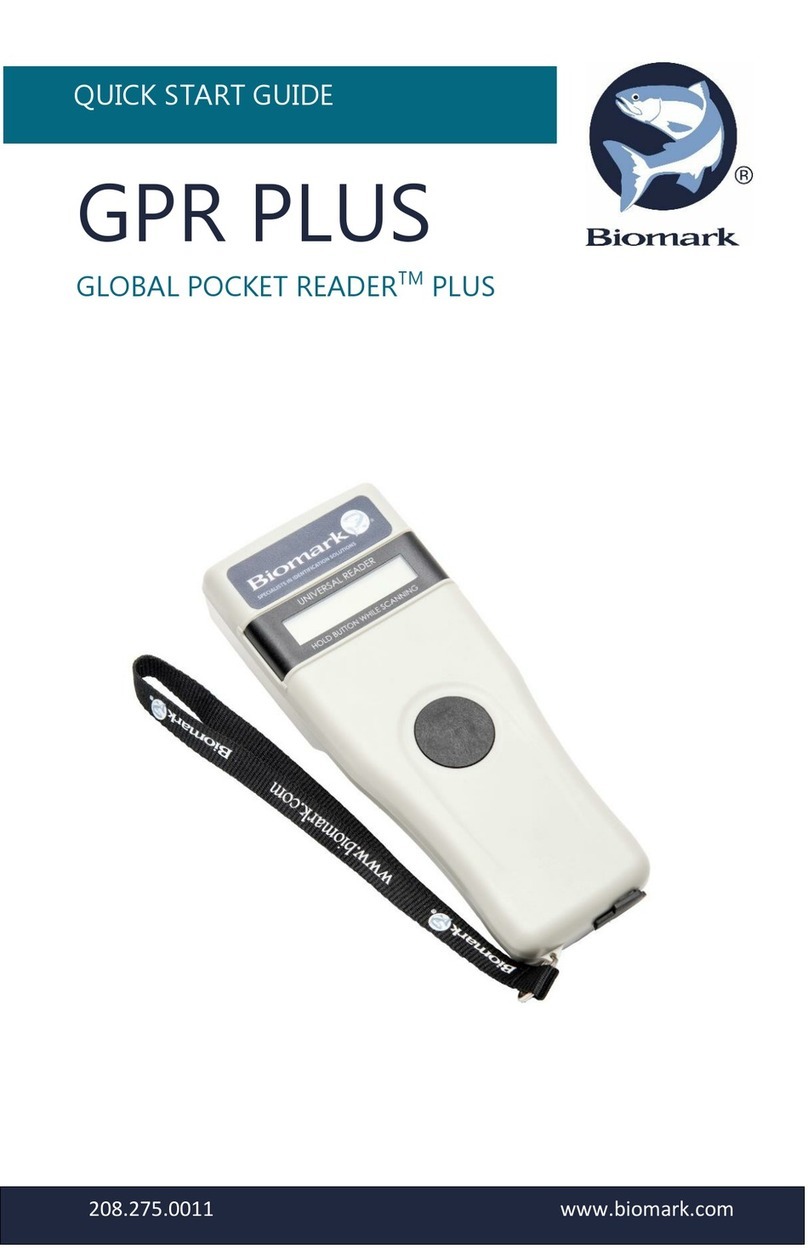
Biomark
Biomark GLOBAL POCKET READER PLUS quick start guide

Rockwell Automation
Rockwell Automation Allen-Bradley 58UHF user manual
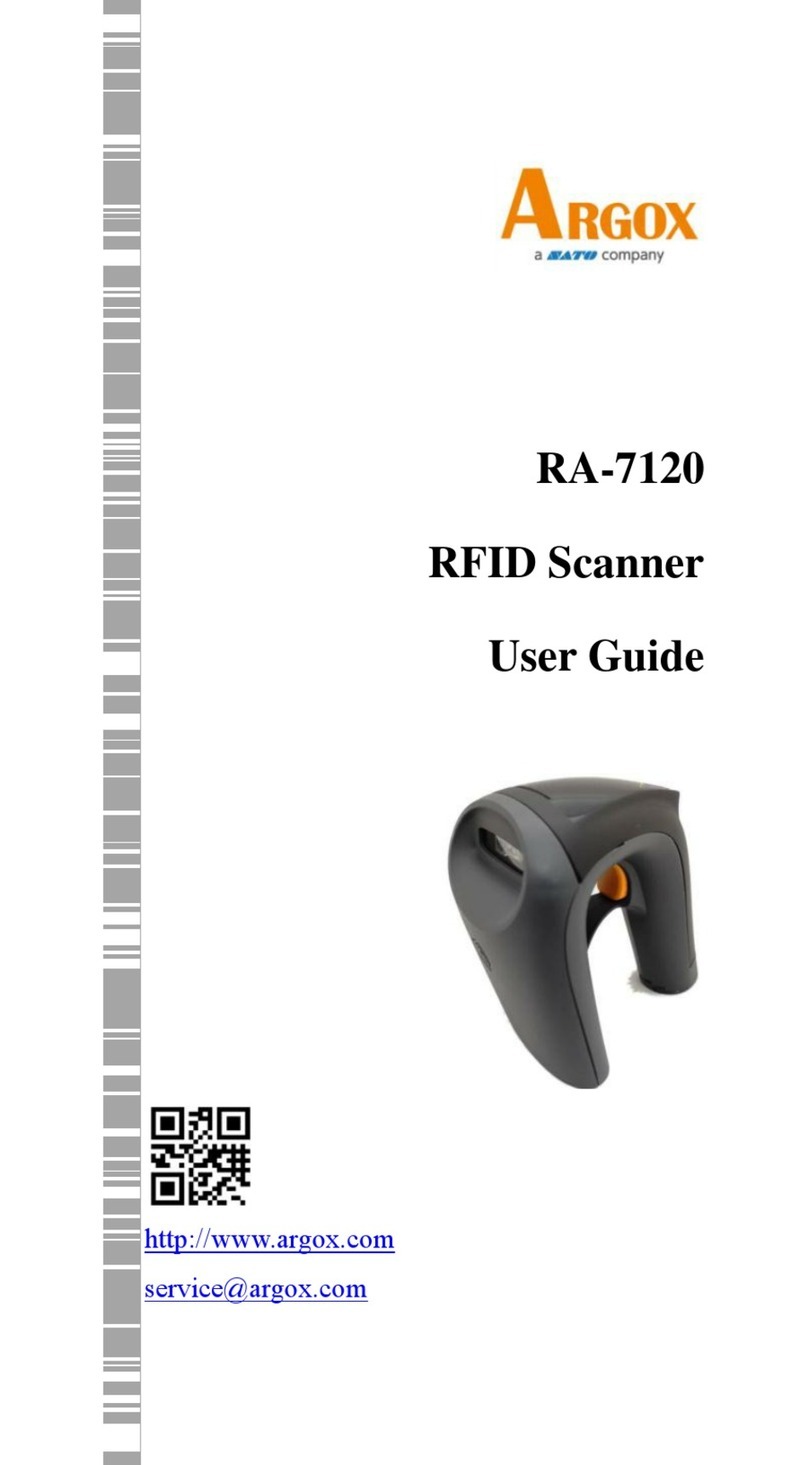
SATO
SATO Argox RA-7120 user guide
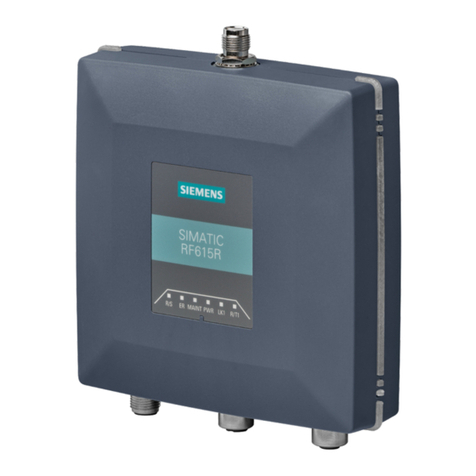
Siemens
Siemens Simatic RF600 System manual
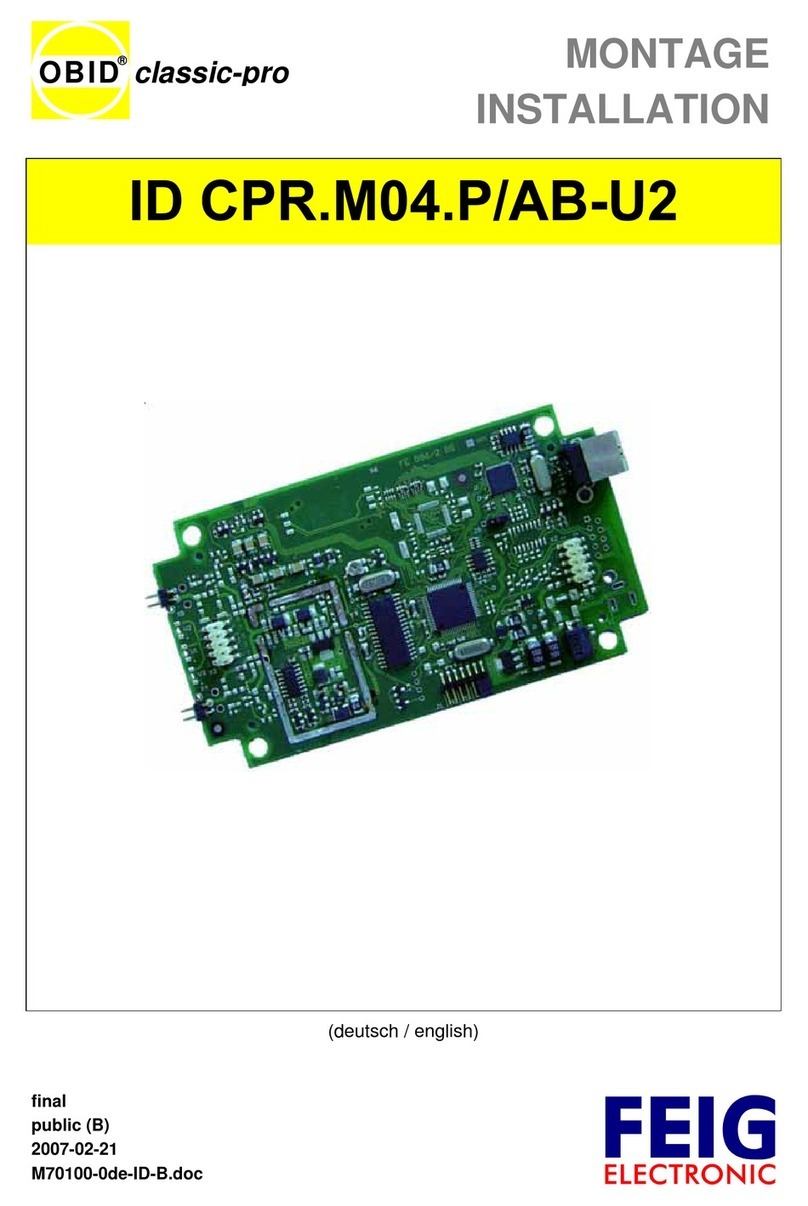
Feig Electronic
Feig Electronic OBID classic-pro ID CPR.M04.P/AB-U2 Installation

Anviz
Anviz FacePass instruction manual
